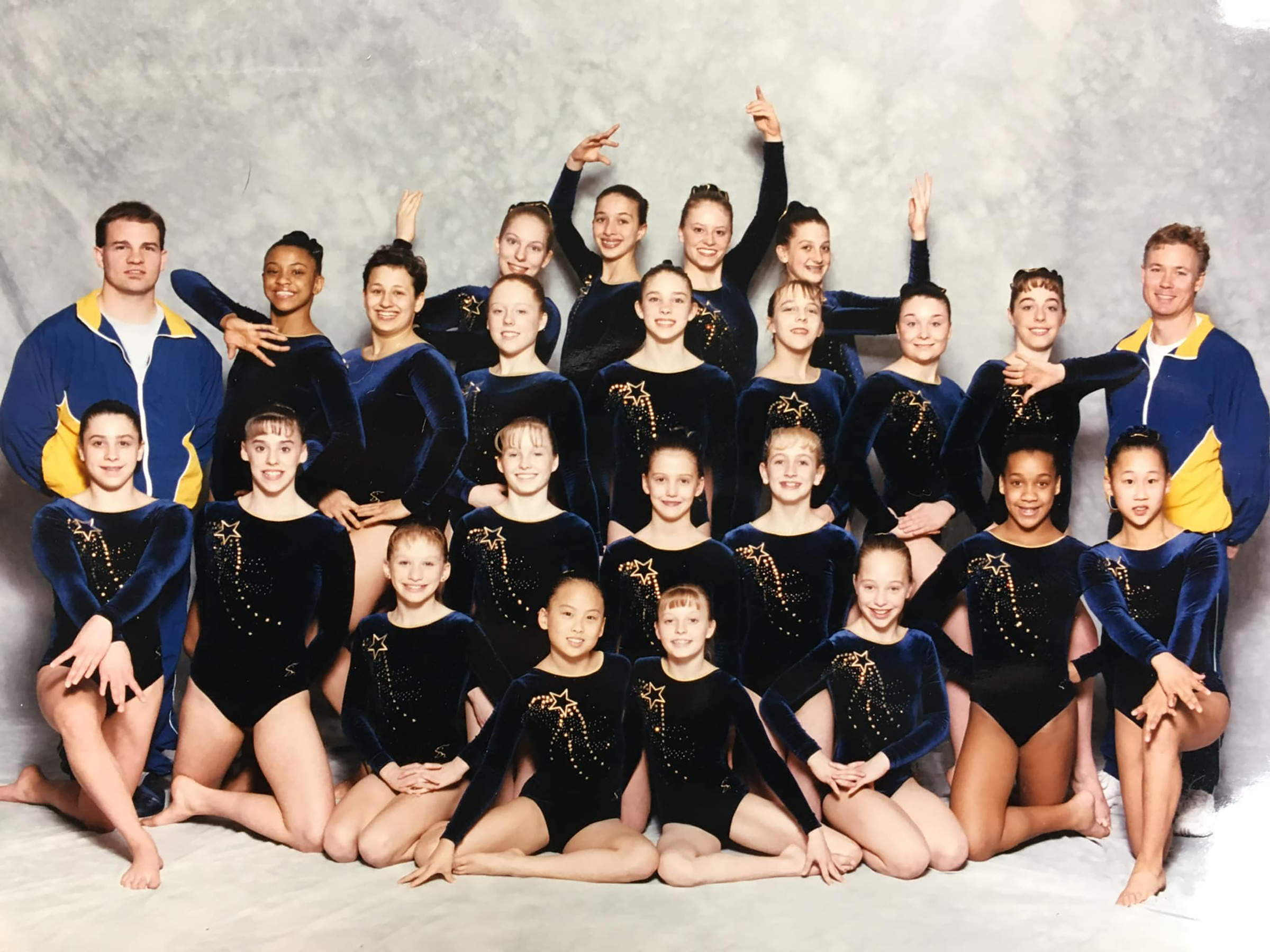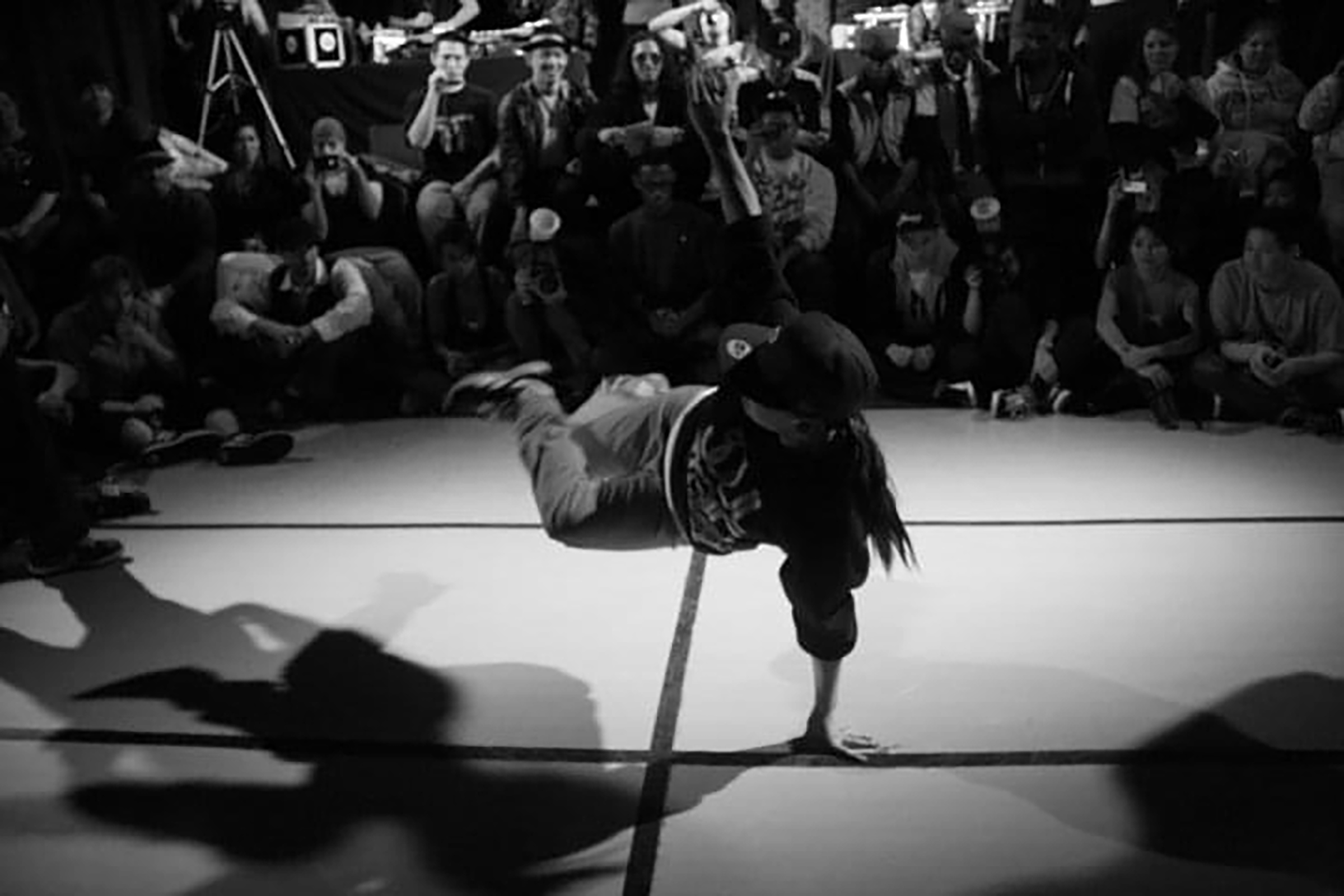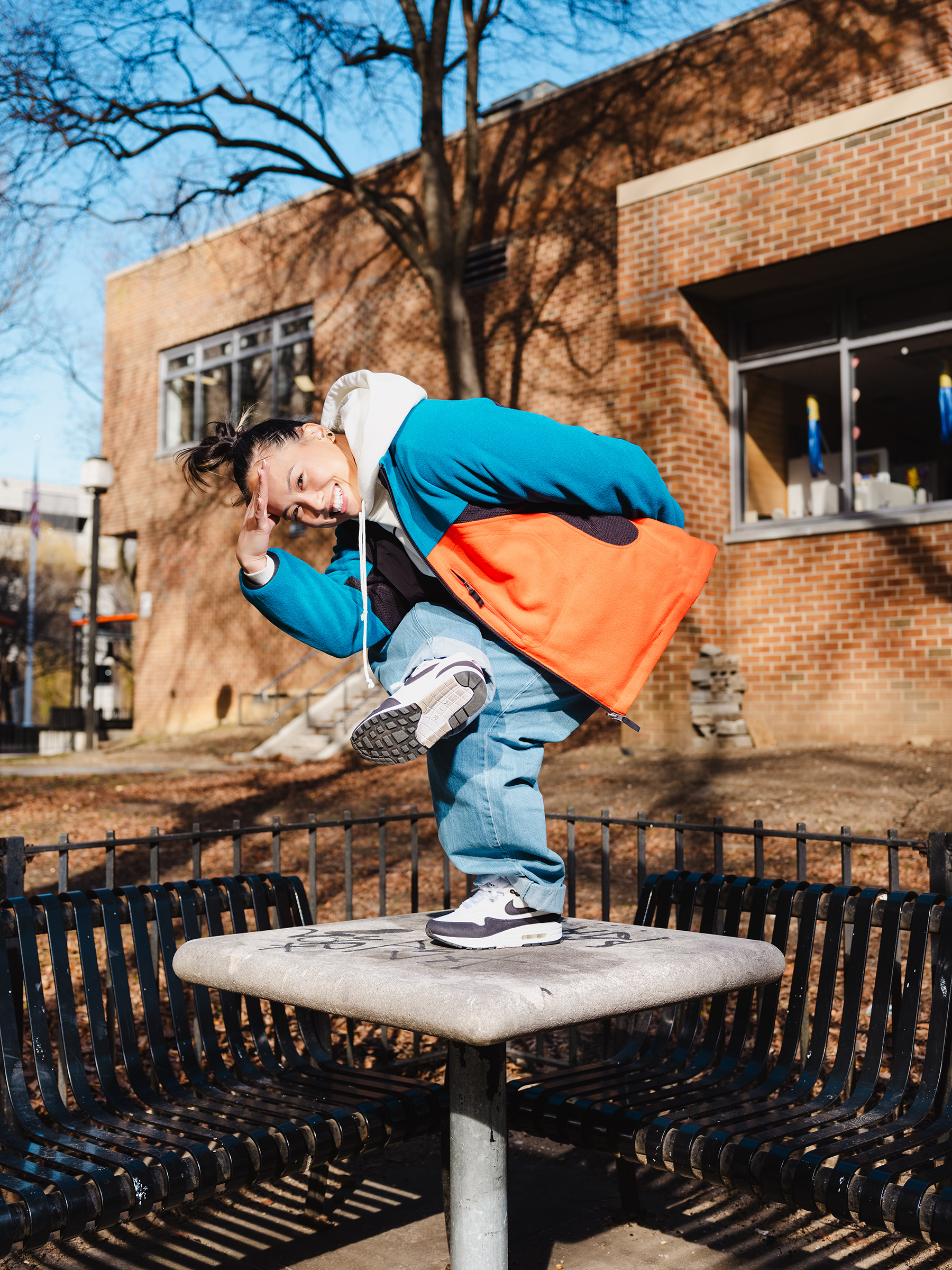When Sunny Choi informs strangers she’s heading to the Paris Olympics for breaking—more colloquially known as breakdancing—she gets her fair share of quizzical stares. Sometimes people laugh. And she’s seen the comments when, say, the Team USA account posts on X about her event. “What the?” replied one man. “Please no,” wrote another. Someone used the clown emoji.
Often Choi laughs with her haters. I know, it’s crazy, right? She explains that breakers today don’t carry around cardboard and start spinning on street corners, like they did in the 1980s. The sold-out inaugural Olympic competition in August will take place at a dedicated venue in the Place de la Concorde, the largest public square in the French capital. But it can be difficult to convince someone, on the spot, of breaking’s worthiness as an Olympic sport.
“I just have to hope that you see it one day,” says Choi, 35, over green tea at a coffee shop in Queens, N.Y., where she’s lived, and danced, for more than a decade.
Breaking is a judged event, just like ratings darlings gymnastics and figure skating. No one says those aren’t sports. Even better, since breakers battle head-to-head in a tournament format, there’s no convoluted points system. Whoever moves better moves on. At the Pan American Games in Santiago, Chile, in November, Choi front-flipped in the air, shuffled her feet, spun to the ground before flashing a peace sign at her opponent, B-girl Luma of Colombia, as if to say, “This is mine.” The judges agreed. The crowd cheered—and her team piled on top of her—when Choi was declared the winner.
“There’s no doubt in my mind this is a sport,” says Choi, whose first name is actually Sun. Her parents nicknamed her Sunny at a young age, and she kept it for her B-girl stage name. “Dance, art, sport, all together. These things aren’t mutually exclusive. It’s one of those things, like politics. When somebody is so far in one direction, you can’t help them see the other. I don’t feel like it’s my place to change everybody’s mind.”
And yet if the appearance of breaking at the Olympics is unexpected, so, too, is Choi's participation. A 30-something Korean American daughter of PhDs who grew up in Tennessee listening to classical music and attended the Wharton School at the University of Pennsylvania before becoming a cosmetics executive making the debut U.S. Olympic team for breaking was probably not on anyone's betting slip. “Breaking comes from Black and brown communities in the Bronx,” Choi says, “and when it goes to the Olympics, we know these aren’t the ones who are going to get all the money. I think it's our responsibility, as the first breakers who go, to be mindful of this."
Still, as she prepares for the Games–perhaps the most unlikely Paris Olympian in Paris' most unlikely Olympic sport–she feels she's exactly where she's supposed to be. “What’s so cool about breaking is you get to be authentically you,” says Choi. “Nobody dictates who you need to be while you’re dancing.”
Jung-In Choi went into labor in November 1988, while teaching a statistics class at Tennessee Tech, in Cookeville, 80 miles east of Nashville. Students called her husband, Kyung-Ju Choi, who arrived to drive her to the hospital where Sunny, the third of their four kids and the only girl, was born.
Sunny’s mother and father had emigrated from Daegu, South Korea a decade earlier as doctoral candidates at the University of Tennessee in math and polymer engineering, respectively. They raised their kids to work hard in school and put them all in piano lessons. Sunny also became a competitive gymnast. “I remember her doing cartwheels in diapers,” says her oldest brother Jin, a financial-marketing executive in Louisville. She watched the 1992 Olympic gymnastics competition in her Little Mermaid tutu. On the drive to her first gymnastics class, at a local YMCA, 3-year-old Sunny asked her mom if she was getting the gold medal that day.

Though she considered pursuing the Olympics, when she was around 12, the family decided against it. She kept competing while attending high school in Kentucky, where the family moved when she was 7, but the decision not to go quite as big did little to prevent her from burning out. She threw herself into AP classes and would conk out while studying. “I even volunteered to do her math homework so she could sleep,” says her mom. “She said no.” A pair of knee injuries also took a toll. In high school, Choi says, she had suicidal ideation. She was so fatigued she sometimes hallucinated, once stopping her car on the highway late at night, because she thought she saw an object in front of her. Luckily the road was empty. “I was a mess,” says Choi.
Like many an overachieving high school student, Choi let loose when she got to college. “I was drinking almost every single day,” she says. One night during her freshman year, however, she spotted members of Freaks of the Beat, the Penn breaking club, dancing on a campus walkway. They persuaded her to come to a class. Given Choi’s gymnastics background, she had a leg up, and breaking gave her the same adrenaline rush in a more communal environment. “You don’t go upside down in many other sports,” she notes. Her parents didn’t quite get this new extracurricular. “I thought it was crazy,” says Jung-In.
Choi graduated in 2011 and held a series of marketing and project-manager jobs in Philly and New York City before landing at Estée Lauder. But she kept breaking on the side. By 2014, she was taking part in international competitions. Her family was still unsure what to make of it. “They were like, ‘When are you going to get married and have kids? When are you going to grow up?’” says Choi, who has three circles tattooed on her right wrist, each representing what she says was an encounter with ghosts in college.
Breaking was added to the Paris Olympic program in 2020. In late 2021, at a camp outside Philly for the top U.S. breakers, a coach asked any aspiring Olympians to raise their hands. Every hand went up except Choi’s. Working full-time as Estée Lauder’s director of global creative operations for skin care while training to make the Olympic team seemed untenable. Plus, even though she was "miserable" in the corporate world, she was still contending with societal expectations. Should she follow the prescribed path: college, steady job, marriage, kids? Or chase a crazy dream? "It was a really hard decision," she says. “My whole entire life, I've been doing what I should be doing as dictated by other people, society, culture.”
She finished second at the World Games in July 2022; within six months, she had left her job. She had a bit of financial security, though hardly a guaranteed spot on the U.S. team. In September 2022, Jung-In attended a breaking event for the first time. Choi spotted her in the middle of the crowd for her first battle, which she won. But before the next one, she couldn’t find her mom. Thinking Jung-In had bolted, her heart sank. Turns out mom had moved closer for a better view of the action. “It was just so exciting,” says Jung-In. “It was so fun.”
Choi’s Pan Am Games gold automatically qualified her for Paris. She has sponsorship deals with Nike and Samsung. “I’m so much happier since leaving my job,” says Choi. “I feel lighter. I have more energy for the things I want to do. I feel present. I definitely feel like a very different person.”

Breaking’s name is derived from dancers hitting the floor during the instrumental interludes on a record—the break—at parties in the Bronx in the 1970s. Along with deejaying, emceeing, and graffiti artistry, breaking is considered one of the four pillars of hip-hop, which celebrated its 50th anniversary last summer. It was an object of American fascination, as evidenced by a slew of dance films, like Flashdance, Wild Style, Breakin’, Breakin’ 2: Electric Boogaloo, and Beat Street, released in the early 1980s. “If those dancers weren’t reacting to that music, hip-hop as we know it would have never started,” says Serouj “Midus” Aprahamian, assistant professor of dance at the University of Illinois and author of The Birth of Breaking: Hip-Hop History From the Floor Up.
Media coined breakdancing to explain the form more broadly. But that term now is considered a bit pejorative, carrying dated connotations that hark back to breaking’s pop-culture heyday. “If you call it breakdancing, you’re not a breaker,” says Choi. “We’re not 14-year-old kids,” explains Kevin Gopie, a.k.a. DJ Renegade, a mainstay of the U.K. hip-hop and dance scene. “We’re grown-ass men who don’t dress in garish colors anymore.”
In 1982, the New York City Rap Tour introduced the pillars of hip-hop to a global audience, stopping in cities like Paris, Lyon, and London. But thanks to oversaturation and the rise of West Coast gangsta rap, breaking soon fell out of favor. “If you were still breaking in the late ‘80s, early ‘90s, people thought you're a bit of a loser,” says DJ Renegade. “If you went to a club and you tried to break, they would kick you out.” The scene moved underground, and the ‘90s brought the start of international competitions, like Battle of the Year, which began in Germany in 1990. Red Bull sponsored its first competition in 2001, and its events became some of the most prestigious and well-attended worldwide. The International Olympic Committee (IOC), always looking for youth-oriented additions to the program (see skateboarding, surfing, Big Air, BMX, climbing), gave breaking a trial run at the 2018 Youth Olympics in Buenos Aires. Breaking was an unqualified success, attracting more than 50,000 fans, 2.5 million social media views, and earning a spot in Paris.
While breaking enthusiasts acknowledge the opportunity the Olympics provide young dancers, some consider breaking’s inclusion in the Games bittersweet. The pioneers are unlikely to share in the spoils. “I’m not particularly excited about breaking in the Olympics,” says Imani Kai Johnson, associate dance professor at University of California, Riverside. “My investment is in hip-hop as a culture with Africanist aesthetic foundations, and not as a sport that is increasingly detached from any cultural context.”
Another sore spot: the World DanceSport Federation (WDSF), which, as an IOC-approved governing body, oversees the sport. The WDSF, which has its roots in competitive ballroom dancing, has called in breakers like DJ Renegade to help devise a judging system and, according to WDSF president Shawn Tay, “ensure that the cultural values of the dance remain intact and the competition on offer is totally authentic.” But many feel it has failed to elevate the sport, or culture, in any meaningful way. “The WDSF has dropped the ball here,” says DJ Renegade. “They’ve done nothing, man. No promotion. Breaking is in the f-cking Olympics, man. Are you insane? This should be plastered everywhere.” Tay points to WDSF’s work organizing events and training camps throughout the world, educating and licensing officials, and granting scholarships, despite limited budgets. “Such statements are not terribly productive, but with any project of this size and stature you can expect a certain amount of criticism, warranted or not,” he says. “We have worked tirelessly over the years together with Paris 2024 and the IOC to prepare breaking for the Olympic Games.”
No matter how much enthusiasm breaking generates in Paris, or how well Choi performs, you won’t see it, or her, in L.A. in 2028. The sport was left off that program—flag football, well capitalized by the NFL, was one of the new sports to make it in. But a strong showing could catapult its Olympic return in 2032 and beyond. Thirty-two dancers–16 B-boys and 16 B-girls–will participate this year, and coming off her gold at the Pan Am Games, Choi is a medal contender.

“She’s got the high-scale aerial power moves,” says Mary Fogarty, an associate professor of dance at York University in Toronto, who has judged events. “Sunny is someone who has enough material to go all the way through.” Fogarty suggests, however, that Choi show more swagger. After all, the judges will be basing their evaluations, in part, on personality and performativity. “I always wanted to see more of the funky side of her, because she’s got it,” says Fogarty. “She's top of the world when all the pieces land for her. Especially if you’re representing the U.S., you’ve got to bring that funk out and show everyone that full package.”
Choi’s a muscular 5 ft. 1 in. and quick to flash a wide smile. Despite all the spinning on her hands, she’s obsessed with keeping her nails impeccable. Her strength coach, Aja Campbell, is pushing for a nail sponsor. And she builds a mean gingerbread house. “The cool thing about Sunny is, you know, she's dressed in baggy clothing and she really embodies that breaker look, but then she has these parts of her that are so, so girlie and fun,” says Campbell.
Choi has no regrets about her new career path and hopes to open a breaking center in New York City at some point after the Games. But she believes she’s sometimes her own worst enemy. She still struggles with self-doubt, which she partially attributes to growing up Asian American in majority-white areas in Tennessee and Kentucky. She was mocked. She felt invisible. She didn’t fit in at Wharton, and for years even felt like an outsider in breaking. While Choi now feels accepted in the breaking world—“I was ostracizing myself,” she says—she hasn’t fully shaken her imposter syndrome. “I walk into battles all the time, I’m like, ‘I can’t win this,’” says Choi. “‘Today’s not my day.’”
In the months before the Games, she’ll be meeting with a sports psychologist to work on her mindset, lifting weights with Campbell, and keeping her diet healthy—she’s eating a lot of salmon—to ensure peak performance. She is confident about one thing. If you give breaking a chance, and appreciate the beats and acrobatics, you won’t be disappointed. “You feel our energy,” says Choi. “You feel the excitement, you feel the happiness or the anger or whatever emotion that the dancer is expressing in that moment. It’s so visceral and raw. I don’t think you get that anywhere else.”
More Must-Reads from TIME
- How the Electoral College Actually Works
- Your Vote Is Safe
- Mel Robbins Will Make You Do It
- Why Vinegar Is So Good for You
- The Surprising Health Benefits of Pain
- You Don’t Have to Dread the End of Daylight Saving
- The 20 Best Halloween TV Episodes of All Time
- Meet TIME's Newest Class of Next Generation Leaders
Write to Sean Gregory at sean.gregory@time.com
